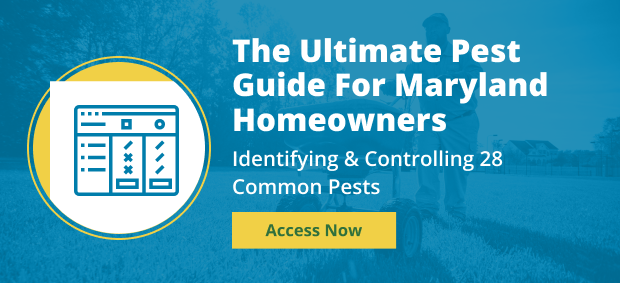Facts About Spiders, 4 Ways to Keep Them Away & How a Pest Control Service Can Help
Spiders have developed a bad reputation over the years.
First of all, they’re pretty creepy with their eight long legs and sneaky demeanor. You’re going about your normal day and before you know it, you feel a web in your face or a tickle on your arm, and there it is. No matter what kind of spider it is, nothing gives you the shivers faster.
That’s not to say there aren’t some nasty spiders out there. However, with the exception of poisonous biters like Black Widows and Brown Recluses, most of these pests really aren’t that dangerous to you. But they, and the webs they leave everywhere, can be super annoying.
And if you’re noticing a lot of spiders in and around your home, there’s one big thing that usually signifies: other pests. So your spider problem might actually be a full-on, multiple-pest problem.
Here are some tips on how to keep spiders away.
Central & Southern Maryland Spiders
Living with spiders isn’t something you signed up for when you moved into your home.
Use This Pest Guide to Identify & Eliminate 28 Different Pests!
Central and Southern Maryland is home to several types of spider species. The key to keeping spiders away is knowing what you’re dealing with.
The two worst ones are the Black Widow and Brown Recluse. Both are venomous, but only the black widow is native to Maryland.
Black Widows are most often found outdoors and have a red hourglass mark under their bodies. A good rule of thumb is to stay away from a spider that has any red and black on it.
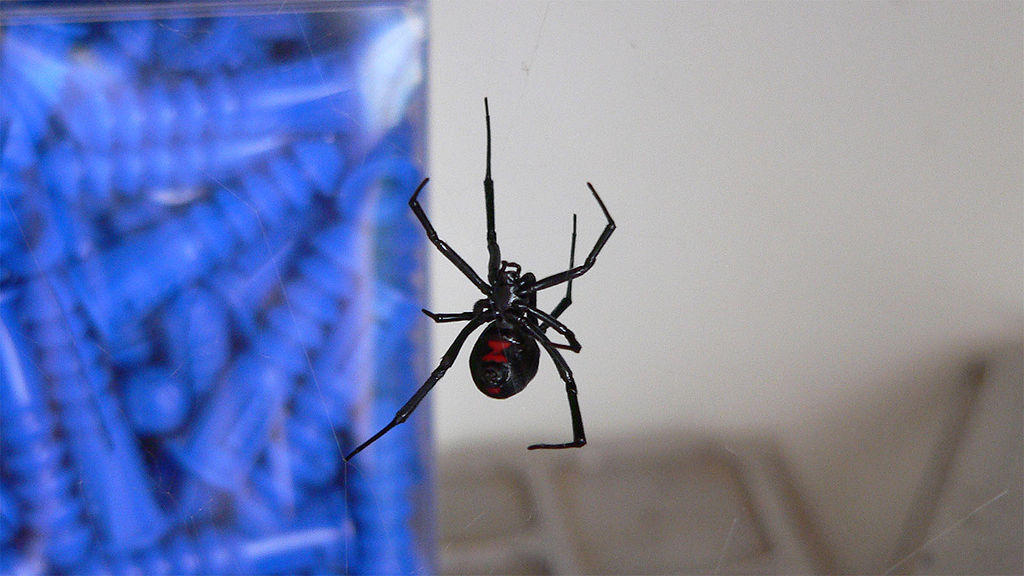 Brown Recluse spiders have been found in our state, possibly from hitching rides from the south during warmer months, but they are less of a worry.
Brown Recluse spiders have been found in our state, possibly from hitching rides from the south during warmer months, but they are less of a worry.
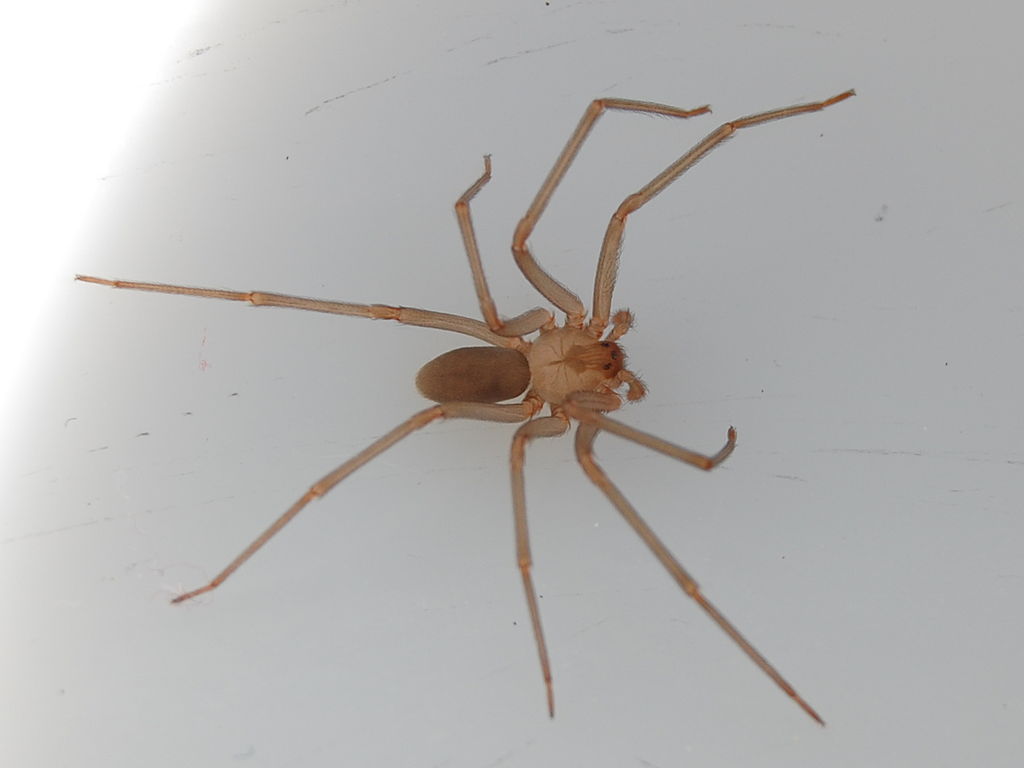 Another relatively larger spider in Maryland is the Wolf Spider. They’re brown and a bit furry and bulkier than other spiders. Their bites are mildly venomous, causing some discomfort and possible itching. They are mostly outdoor spiders, but they can come indoors in the fall when it gets colder outside.
Another relatively larger spider in Maryland is the Wolf Spider. They’re brown and a bit furry and bulkier than other spiders. Their bites are mildly venomous, causing some discomfort and possible itching. They are mostly outdoor spiders, but they can come indoors in the fall when it gets colder outside.
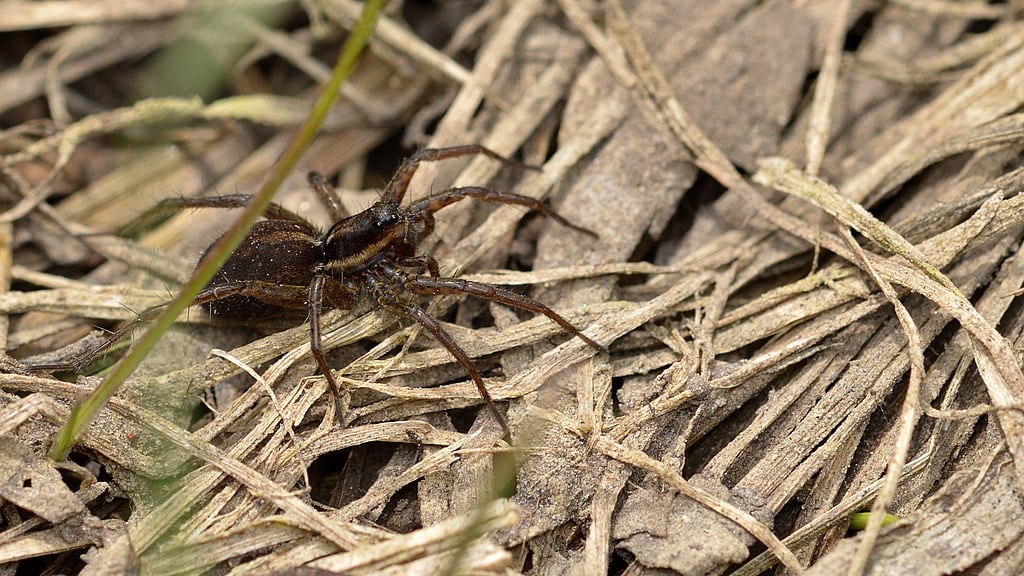 Then we have three different kinds of spiders you’ll see most often indoors: Yellow House Spiders, Cobweb Spiders, and Jumping Spiders.
Then we have three different kinds of spiders you’ll see most often indoors: Yellow House Spiders, Cobweb Spiders, and Jumping Spiders.
Yellow House Spiders have yellow-green bodies that are a quarter-inch in length. They like to crawl fast and tend to move into homes in late fall. Cobweb Spiders move into homes when they’re small and build webs to try and catch insects. Jumping Spiders are the ones most mistaken for Black Widows because of their black, hairy appearance. They are often seen on ceilings and take short, quick jumps.
Now that you know what you’re dealing with, let’s find out how you can keep spiders away.
Spiders, Spiders Everywhere
Ok, so you know arachnids create webs and draw in other insects and are generally annoying to have around.
So now it’s time to find some peace by learning how to keep spiders away.
Clear the Clutter
Spiders enjoy dusty areas where they feel their nests will be safe. That means they love clutter. Reducing clutter in your home will naturally reduce arachnids.
Keeping up a regular cleaning schedule will also help keep spiders away. Vacuuming the floors is one thing, but to keep these pests away you need to vacuum under and behind furniture and around window sills and floorboards as well. It sounds pretty simple, but a normal cleaning routine is a natural eight-legged insect eliminator.
Remove Cobwebs
Spiders like to hang out where they won’t be disturbed. That’s why if you don’t maintain good cleaning and clutter removal, they’ll find some nice dusty places to reside.
Use a duster, broom, or hose attachment on a vacuum to eliminate cobwebs when you see them.
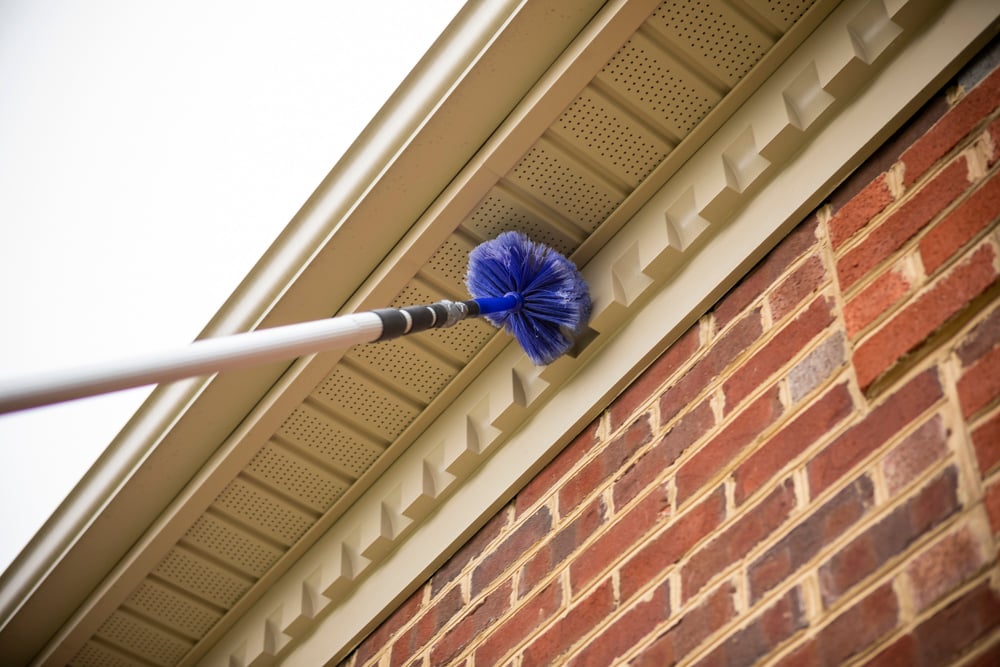 If you continue to take down and disturb their webs, spiders will move.
If you continue to take down and disturb their webs, spiders will move.
Spider exterminators will use a tool like a Webster, which is a sort of duster attached to an extension pole, to eliminate webs from the ground up to two stories high around your home. This service is typically part of their quarterly perimeter pest control treatments.
Seal Obvious Entryways
To keep spiders away, make sure your doors are well-sealed. This not only keeps out the eight-legged bugs, but also the others that they may be following indoors to eat.
Other hot spots are windows. Make sure windows close tight and fill any holes or gaps around them. Also, fill in any gaps in walls or around pipework and under doors to deter entry.
Eliminate the Food Supply
Just like any other living thing, spiders need food and water to survive. And they don’t need much water at all; they can survive on just drops left in your sinks or along window sills.
This is why keeping your windows clean and wiping away condensation will help.
Next, you must eliminate the insects spiders feed on. In fact, if you’re seeing a lot of spiders, that’s usually a sign that you have other bugs, such as flies, moths, and beetles. Here’s where a spider exterminator can assist. They can reduce the number of insects that get into your home with quarterly perimeter pest control treatments.
This is a very important part of spider pest control, and here’s why: The eight-legged wonders walk on the tips of their legs carrying their bodies above the ground. This means they don’t really come in contact with any pesticides like other insects. So pest control doesn’t really take care of spiders as much as removing their webs and their food does.
Seeing Lots of Webs? Natural Green Can Help
Spiders might not be the worst insects. After all, they do keep other bug populations down. But when they start setting up webs and nests in your personal space, they become a nuisance.
We get it. And if you’re concerned about the number of webs and spiders you’re seeing in and around your home, we’d like to help you make the right choices to keep spiders away. Hiring a reputable pest control firm that employs experienced and conscientious technicians can give you peace of mind, while eliminating spiders, their webs, and their food sources.
We want you to be able to enjoy your home -- arachnid-free. Give us a call and we’ll bring our proven pest control experience and create a custom plan for your Central and Southern Maryland home. Get started today with a free quote.
Spiders have developed a bad reputation over the years.
First of all, they’re pretty creepy with their eight long legs and sneaky demeanor. You’re going about your normal day and before you know it, you feel a web in your face or a tickle on your arm, and there it is. No matter what kind of spider it is, nothing gives you the shivers faster.
That’s not to say there aren’t some nasty spiders out there. However, with the exception of poisonous biters like Black Widows and Brown Recluses, most of these pests really aren’t that dangerous to you. But they, and the webs they leave everywhere, can be super annoying.
And if you’re noticing a lot of spiders in and around your home, there’s one big thing that usually signifies: other pests. So your spider problem might actually be a full-on, multiple-pest problem.
Here are some tips on how to keep spiders away.
Central & Southern Maryland Spiders
Living with spiders isn’t something you signed up for when you moved into your home.
Use This Pest Guide to Identify & Eliminate 28 Different Pests!
Central and Southern Maryland is home to several types of spider species. The key to keeping spiders away is knowing what you’re dealing with.
The two worst ones are the Black Widow and Brown Recluse. Both are venomous, but only the black widow is native to Maryland.
Black Widows are most often found outdoors and have a red hourglass mark under their bodies. A good rule of thumb is to stay away from a spider that has any red and black on it.
 Brown Recluse spiders have been found in our state, possibly from hitching rides from the south during warmer months, but they are less of a worry.
Brown Recluse spiders have been found in our state, possibly from hitching rides from the south during warmer months, but they are less of a worry.
 Another relatively larger spider in Maryland is the Wolf Spider. They’re brown and a bit furry and bulkier than other spiders. Their bites are mildly venomous, causing some discomfort and possible itching. They are mostly outdoor spiders, but they can come indoors in the fall when it gets colder outside.
Another relatively larger spider in Maryland is the Wolf Spider. They’re brown and a bit furry and bulkier than other spiders. Their bites are mildly venomous, causing some discomfort and possible itching. They are mostly outdoor spiders, but they can come indoors in the fall when it gets colder outside.
 Then we have three different kinds of spiders you’ll see most often indoors: Yellow House Spiders, Cobweb Spiders, and Jumping Spiders.
Then we have three different kinds of spiders you’ll see most often indoors: Yellow House Spiders, Cobweb Spiders, and Jumping Spiders.
Yellow House Spiders have yellow-green bodies that are a quarter-inch in length. They like to crawl fast and tend to move into homes in late fall. Cobweb Spiders move into homes when they’re small and build webs to try and catch insects. Jumping Spiders are the ones most mistaken for Black Widows because of their black, hairy appearance. They are often seen on ceilings and take short, quick jumps.
Now that you know what you’re dealing with, let’s find out how you can keep spiders away.
Spiders, Spiders Everywhere
Ok, so you know arachnids create webs and draw in other insects and are generally annoying to have around.
So now it’s time to find some peace by learning how to keep spiders away.
Clear the Clutter
Spiders enjoy dusty areas where they feel their nests will be safe. That means they love clutter. Reducing clutter in your home will naturally reduce arachnids.
Keeping up a regular cleaning schedule will also help keep spiders away. Vacuuming the floors is one thing, but to keep these pests away you need to vacuum under and behind furniture and around window sills and floorboards as well. It sounds pretty simple, but a normal cleaning routine is a natural eight-legged insect eliminator.
Remove Cobwebs
Spiders like to hang out where they won’t be disturbed. That’s why if you don’t maintain good cleaning and clutter removal, they’ll find some nice dusty places to reside.
Use a duster, broom, or hose attachment on a vacuum to eliminate cobwebs when you see them.
 If you continue to take down and disturb their webs, spiders will move.
If you continue to take down and disturb their webs, spiders will move.
Spider exterminators will use a tool like a Webster, which is a sort of duster attached to an extension pole, to eliminate webs from the ground up to two stories high around your home. This service is typically part of their quarterly perimeter pest control treatments.
Seal Obvious Entryways
To keep spiders away, make sure your doors are well-sealed. This not only keeps out the eight-legged bugs, but also the others that they may be following indoors to eat.
Other hot spots are windows. Make sure windows close tight and fill any holes or gaps around them. Also, fill in any gaps in walls or around pipework and under doors to deter entry.
Eliminate the Food Supply
Just like any other living thing, spiders need food and water to survive. And they don’t need much water at all; they can survive on just drops left in your sinks or along window sills.
This is why keeping your windows clean and wiping away condensation will help.
Next, you must eliminate the insects spiders feed on. In fact, if you’re seeing a lot of spiders, that’s usually a sign that you have other bugs, such as flies, moths, and beetles. Here’s where a spider exterminator can assist. They can reduce the number of insects that get into your home with quarterly perimeter pest control treatments.
This is a very important part of spider pest control, and here’s why: The eight-legged wonders walk on the tips of their legs carrying their bodies above the ground. This means they don’t really come in contact with any pesticides like other insects. So pest control doesn’t really take care of spiders as much as removing their webs and their food does.
Seeing Lots of Webs? Natural Green Can Help
Spiders might not be the worst insects. After all, they do keep other bug populations down. But when they start setting up webs and nests in your personal space, they become a nuisance.
We get it. And if you’re concerned about the number of webs and spiders you’re seeing in and around your home, we’d like to help you make the right choices to keep spiders away. Hiring a reputable pest control firm that employs experienced and conscientious technicians can give you peace of mind, while eliminating spiders, their webs, and their food sources.
We want you to be able to enjoy your home -- arachnid-free. Give us a call and we’ll bring our proven pest control experience and create a custom plan for your Central and Southern Maryland home. Get started today with a free quote.
Image Source: Cobweb Spider, Black Widow Spider, Brown Recluse Spider, Wolf Spider
Share This
Spiders have developed a bad reputation over the years.
First of all, they’re pretty creepy with their eight long legs and sneaky demeanor. You’re going about your normal day and before you know it, you feel a web in your face or a tickle on your arm, and there it is. No matter what kind of spider it is, nothing gives you the shivers faster.
That’s not to say there aren’t some nasty spiders out there. However, with the exception of poisonous biters like Black Widows and Brown Recluses, most of these pests really aren’t that dangerous to you. But they, and the webs they leave everywhere, can be super annoying.
And if you’re noticing a lot of spiders in and around your home, there’s one big thing that usually signifies: other pests. So your spider problem might actually be a full-on, multiple-pest problem.
Here are some tips on how to keep spiders away.
Central & Southern Maryland Spiders
Living with spiders isn’t something you signed up for when you moved into your home.
Use This Pest Guide to Identify & Eliminate 28 Different Pests!
Central and Southern Maryland is home to several types of spider species. The key to keeping spiders away is knowing what you’re dealing with.
The two worst ones are the Black Widow and Brown Recluse. Both are venomous, but only the black widow is native to Maryland.
Black Widows are most often found outdoors and have a red hourglass mark under their bodies. A good rule of thumb is to stay away from a spider that has any red and black on it.
 Brown Recluse spiders have been found in our state, possibly from hitching rides from the south during warmer months, but they are less of a worry.
Brown Recluse spiders have been found in our state, possibly from hitching rides from the south during warmer months, but they are less of a worry.
 Another relatively larger spider in Maryland is the Wolf Spider. They’re brown and a bit furry and bulkier than other spiders. Their bites are mildly venomous, causing some discomfort and possible itching. They are mostly outdoor spiders, but they can come indoors in the fall when it gets colder outside.
Another relatively larger spider in Maryland is the Wolf Spider. They’re brown and a bit furry and bulkier than other spiders. Their bites are mildly venomous, causing some discomfort and possible itching. They are mostly outdoor spiders, but they can come indoors in the fall when it gets colder outside.
 Then we have three different kinds of spiders you’ll see most often indoors: Yellow House Spiders, Cobweb Spiders, and Jumping Spiders.
Then we have three different kinds of spiders you’ll see most often indoors: Yellow House Spiders, Cobweb Spiders, and Jumping Spiders.
Yellow House Spiders have yellow-green bodies that are a quarter-inch in length. They like to crawl fast and tend to move into homes in late fall. Cobweb Spiders move into homes when they’re small and build webs to try and catch insects. Jumping Spiders are the ones most mistaken for Black Widows because of their black, hairy appearance. They are often seen on ceilings and take short, quick jumps.
Now that you know what you’re dealing with, let’s find out how you can keep spiders away.
Spiders, Spiders Everywhere
Ok, so you know arachnids create webs and draw in other insects and are generally annoying to have around.
So now it’s time to find some peace by learning how to keep spiders away.
Clear the Clutter
Spiders enjoy dusty areas where they feel their nests will be safe. That means they love clutter. Reducing clutter in your home will naturally reduce arachnids.
Keeping up a regular cleaning schedule will also help keep spiders away. Vacuuming the floors is one thing, but to keep these pests away you need to vacuum under and behind furniture and around window sills and floorboards as well. It sounds pretty simple, but a normal cleaning routine is a natural eight-legged insect eliminator.
Remove Cobwebs
Spiders like to hang out where they won’t be disturbed. That’s why if you don’t maintain good cleaning and clutter removal, they’ll find some nice dusty places to reside.
Use a duster, broom, or hose attachment on a vacuum to eliminate cobwebs when you see them.
 If you continue to take down and disturb their webs, spiders will move.
If you continue to take down and disturb their webs, spiders will move.
Spider exterminators will use a tool like a Webster, which is a sort of duster attached to an extension pole, to eliminate webs from the ground up to two stories high around your home. This service is typically part of their quarterly perimeter pest control treatments.
Seal Obvious Entryways
To keep spiders away, make sure your doors are well-sealed. This not only keeps out the eight-legged bugs, but also the others that they may be following indoors to eat.
Other hot spots are windows. Make sure windows close tight and fill any holes or gaps around them. Also, fill in any gaps in walls or around pipework and under doors to deter entry.
Eliminate the Food Supply
Just like any other living thing, spiders need food and water to survive. And they don’t need much water at all; they can survive on just drops left in your sinks or along window sills.
This is why keeping your windows clean and wiping away condensation will help.
Next, you must eliminate the insects spiders feed on. In fact, if you’re seeing a lot of spiders, that’s usually a sign that you have other bugs, such as flies, moths, and beetles. Here’s where a spider exterminator can assist. They can reduce the number of insects that get into your home with quarterly perimeter pest control treatments.
This is a very important part of spider pest control, and here’s why: The eight-legged wonders walk on the tips of their legs carrying their bodies above the ground. This means they don’t really come in contact with any pesticides like other insects. So pest control doesn’t really take care of spiders as much as removing their webs and their food does.
Seeing Lots of Webs? Natural Green Can Help
Spiders might not be the worst insects. After all, they do keep other bug populations down. But when they start setting up webs and nests in your personal space, they become a nuisance.
We get it. And if you’re concerned about the number of webs and spiders you’re seeing in and around your home, we’d like to help you make the right choices to keep spiders away. Hiring a reputable pest control firm that employs experienced and conscientious technicians can give you peace of mind, while eliminating spiders, their webs, and their food sources.
We want you to be able to enjoy your home -- arachnid-free. Give us a call and we’ll bring our proven pest control experience and create a custom plan for your Central and Southern Maryland home. Get started today with a free quote.
Image Source: Cobweb Spider, Black Widow Spider, Brown Recluse Spider, Wolf Spider
Share This
Topics: Pest Control


